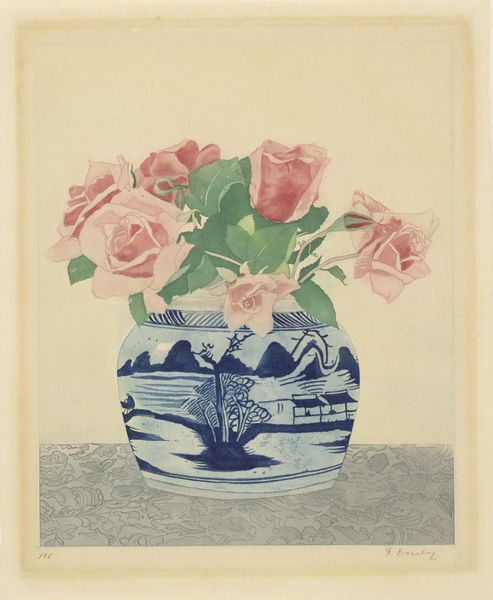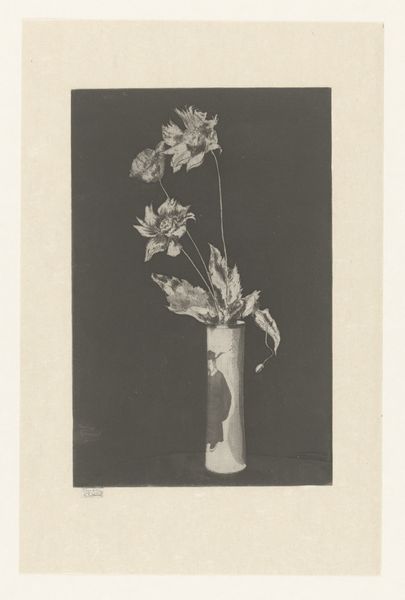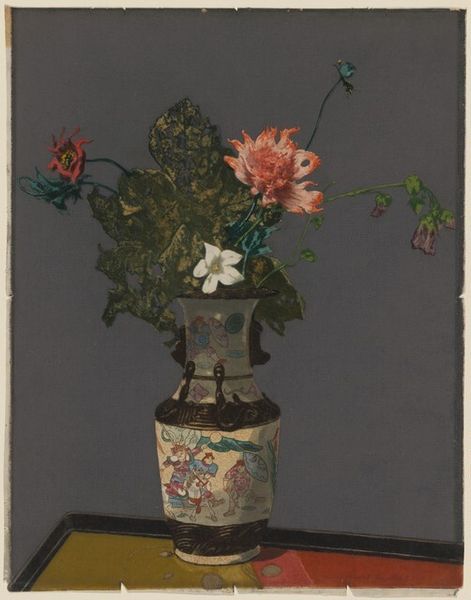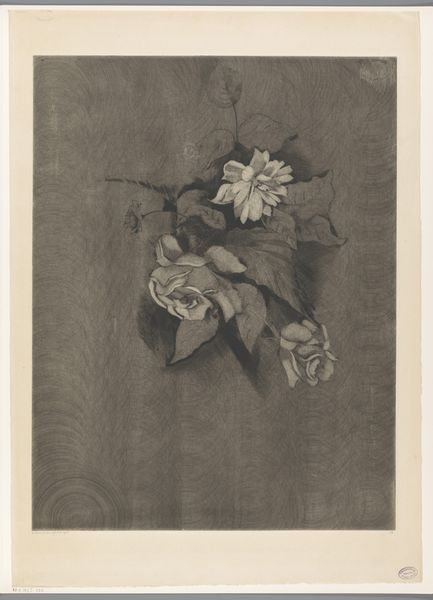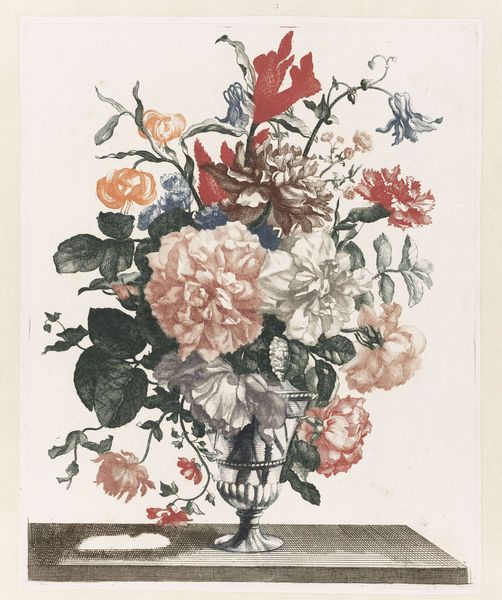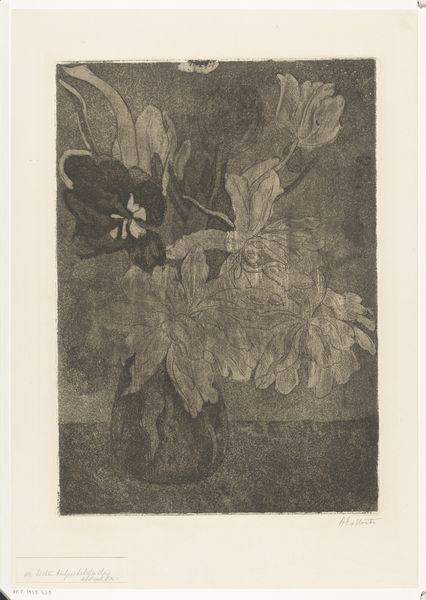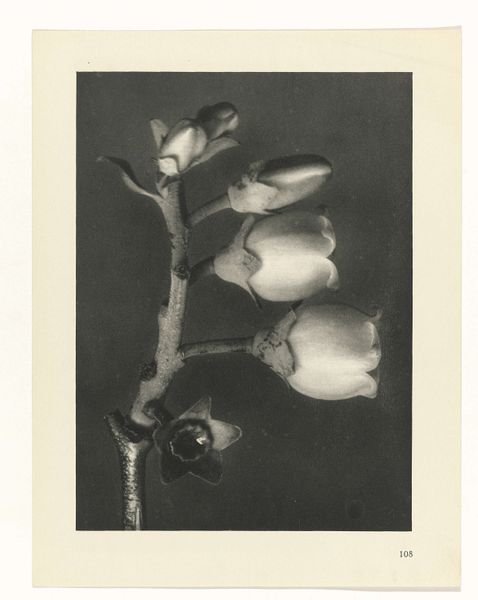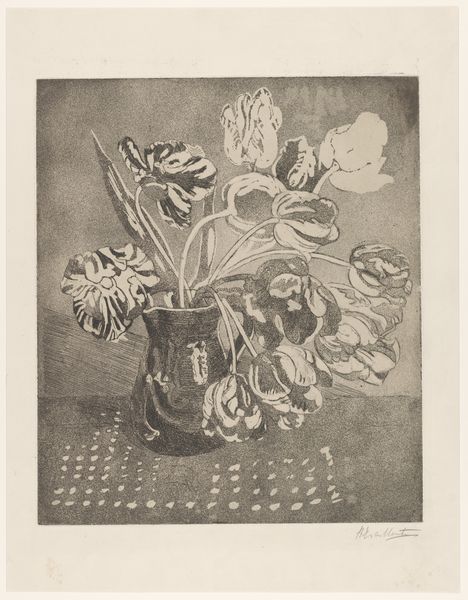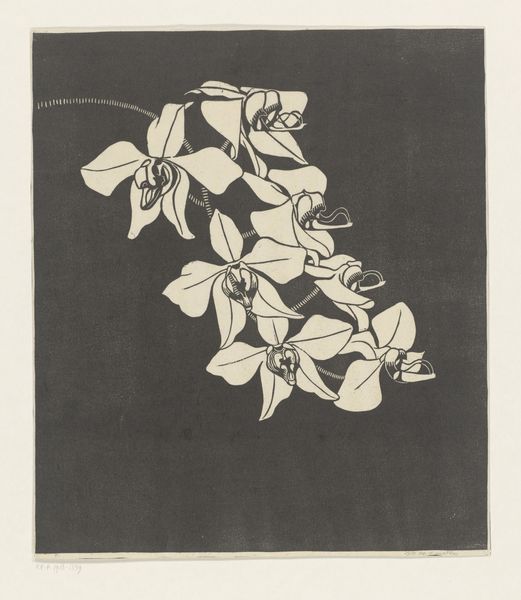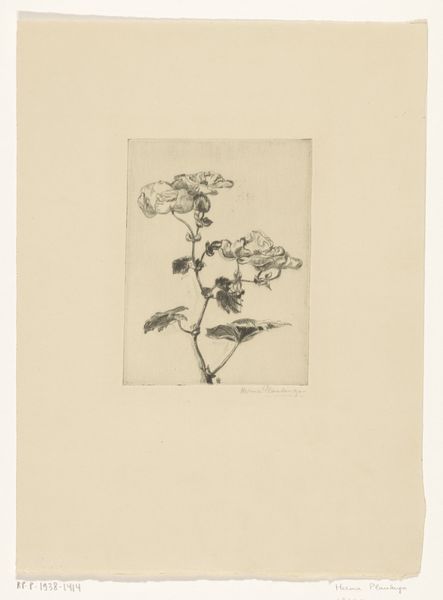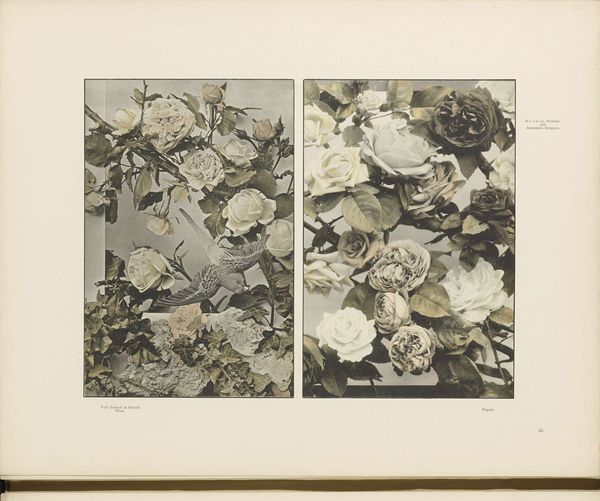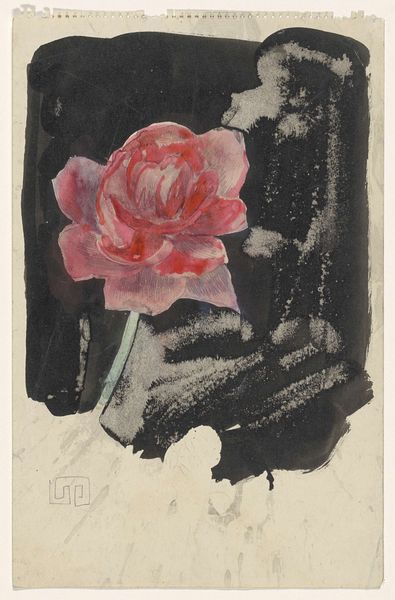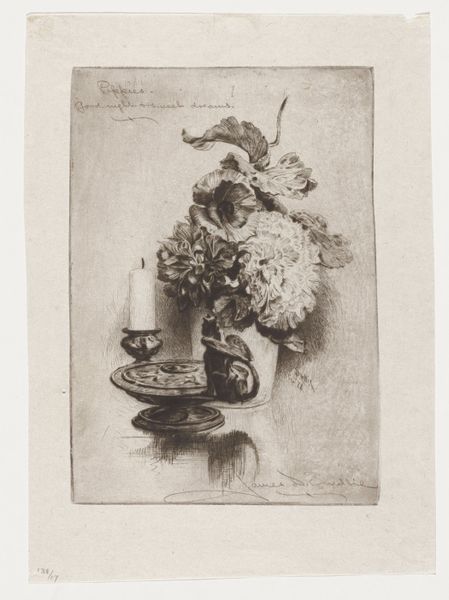
Dimensions: height 450 mm, width 355 mm
Copyright: Rijks Museum: Open Domain
Curator: Looking at "Three Roses in an Oriental Vase" painted in 1894 by Theo Nieuwenhuis now housed in the Rijksmuseum… I'm struck by the fragile melancholy of it. Editor: Melancholy is spot-on. I’m immediately seeing a clash, really—the delicate roses against this almost aggressively dark background. Curator: Indeed, the roses, rendered in soft watercolor, droop with a certain weary grace against a speckled, midnight blue, which evokes a dreamlike background. Editor: It pulls us into a liminal space, doesn't it? Especially juxtaposed with what's labeled as an 'oriental vase.' How do you read that gesture towards Orientalism here? Is it merely decorative? Curator: Hmmm, on the one hand it could be as simple as the popular exoticism of the late 19th century. But there is an intentionality that seems to probe deeper than decoration. Perhaps he's subtly alluding to cultural exchanges. Or maybe he is highlighting Western fascination with Eastern aesthetics and themes. Editor: And the vase grounds them. Considering how much of art history has erased women, especially women of color, were they even in the conversation around art and aesthetics or positioned more like decorations within those systems of power? Curator: Definitely! Nieuwenhuis positions those roses, almost literally weighed down within a social power play by an oppressive art institution and a voyeuristic art audience that he as the male artist is also embedded. That’s the story! It makes me think, maybe there’s commentary, too, on the transient nature of beauty and the exoticising gaze. The flowers won't bloom forever. Editor: Absolutely, there is beauty, of course. Even with the somber tones, it feels almost defiant in its portrayal of wilting beauty; yet a little complicit. A commentary from the inside that knows it needs to survive with and within certain parameters of society at the time. Curator: What's especially intriguing for me is how Nieuwenhuis balances the overall dark background of the watercolor, but at the same time uses almost whimsical touches with the paint. The background becomes part of this expression. It feels more than just paint, there is something special. Editor: He balances and plays on contradictions, which, for me, are at the heart of all meaningful activism. I feel he is opening space to discuss. It is an intriguing way to prompt discourse. Curator: A perspective into a complicated situation. Very good! Thank you. Editor: My pleasure, thank you.
Comments
No comments
Be the first to comment and join the conversation on the ultimate creative platform.
